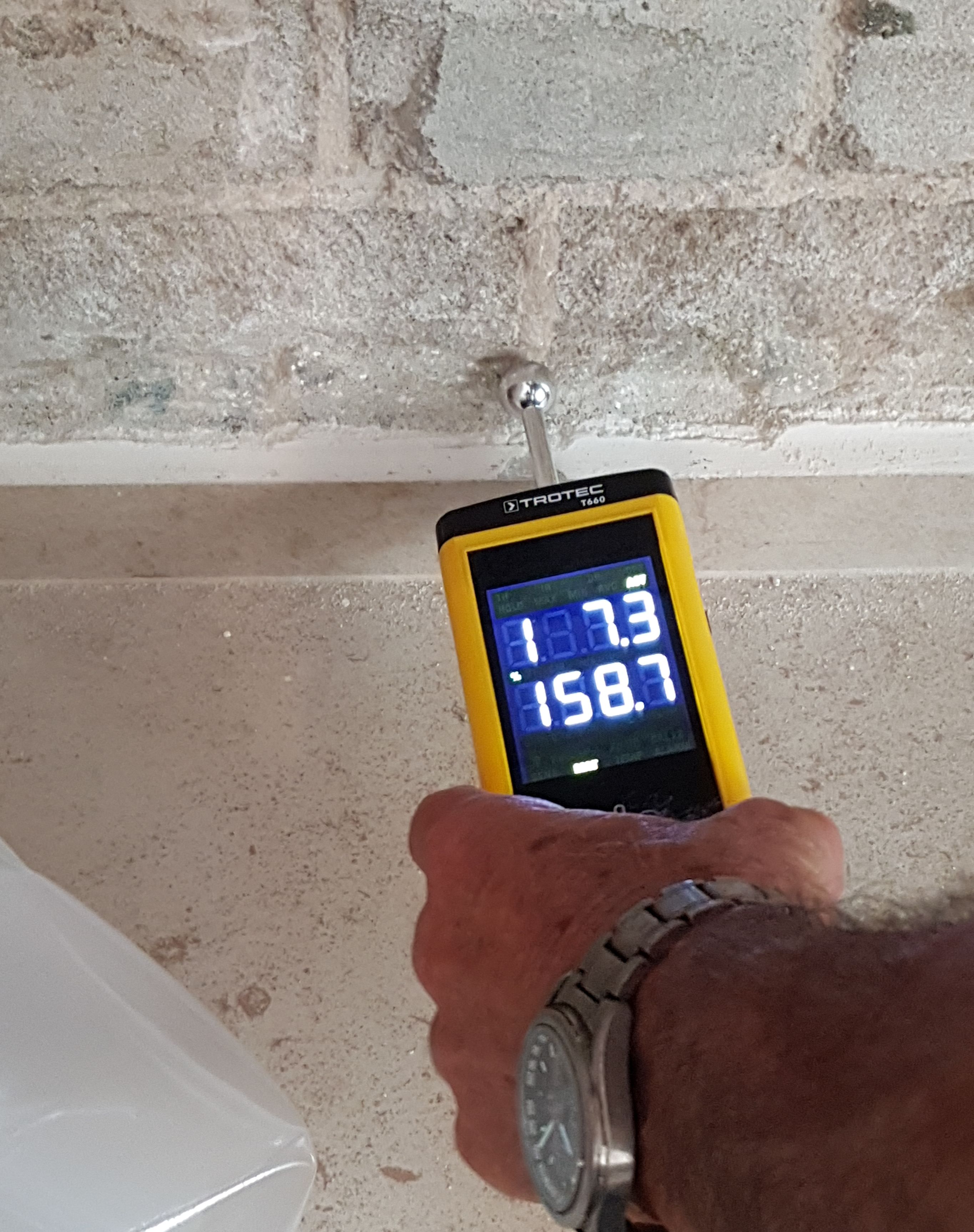Recognizing the Various Kinds Of Moisture Meters and Their Applications
The Ultimate Guide to Moisture Meters: A Comprehensive Introduction and Just How They Can Conserve You Money
In the realm of structure upkeep, building and construction, and different sectors, the significance of precisely gauging wetness degrees can not be overstated. Dampness meters function as important tools in finding and monitoring moisture material in products, aiding in protecting against expensive problems and making sure the top quality of products. Comprehending the nuances of different types of dampness meters, their applications, and the potential cost-saving benefits they provide can be a game-changer for businesses and experts alike. Finding just how these tools can not only streamline procedures however additionally contribute to financial cost savings is a trip worth starting.
Kinds Of Moisture Meters
Numerous kinds of wetness meters are readily available for different applications in numerous industries. One common kind is the pin-type wetness meter, which determines the electric resistance between two pins put into a material. This type appropriates for wood, drywall, and various other building products. Pinless dampness meters, on the various other hand, use electro-magnetic sensor plates to scan a bigger area without triggering damage to the product's surface. These meters are excellent for rapidly analyzing moisture levels in huge locations such as wall surfaces and floorings.
Furthermore, there are also specialty wetness meters made for particular products like hay, grain, or dirt. These meters offer precise wetness analyses customized to the one-of-a-kind properties of the product being tested. Infrared moisture meters measure the thermal residential or commercial properties of a material to identify its wetness web content non-invasively, making them valuable for applications where pin or pinless meters might not appropriate. Recognizing the various kinds of dampness meters readily available can aid markets choose the most proper device for their details dampness dimension requirements.

Advantages of Using Moisture Meters

In addition, using moisture meters can result in raised energy efficiency. By determining locations with high dampness degrees, such as leakages or poor insulation, modifications can be made to enhance energy preservation and lower utility prices. In farming setups, dampness meters play an important duty in optimizing crop yields by enabling farmers to monitor soil dampness degrees and make educated watering decisions. In general, the benefits of using dampness meters cover across various markets, supplying economical solutions and promoting better quality assurance techniques.
How to Choose the Right Moisture Meter
Picking the ideal wetness meter includes considering vital aspects such as material compatibility, measurement array, and calibration accuracy. When picking a wetness meter, it's vital to guarantee that the meter is ideal for the specific material you will certainly be testing. Various materials have differing electrical buildings that can impact dampness readings, so picking a meter developed for your product is critical for precise results. In addition, consider the dimension variety of the wetness meter. Make certain that the meter can find moisture levels within the variety required for your applications. Calibration precision is another vital factor to remember (Moisture Meter). Opt for a moisture meter with trustworthy calibration to ensure accurate and regular readings. Some meters may call for periodic calibration adjustments, so recognizing the calibration procedure is very important. By carefully examining these variables, you can choose a dampness meter that fulfills your needs and provides precise wetness measurements for your jobs.
Correct Techniques for Moisture Meter Usage
To guarantee exact wetness analyses and maximize the effectiveness of a wetness meter, utilizing correct methods is crucial. When utilizing a pin-type moisture meter, put the pins or probes right into the product being checked until they make complete contact. By complying with these correct methods, users can rely on my company their wetness meter to provide credible wetness levels, assisting in stopping costly damage or guaranteeing top quality in various applications.

Cost Financial Savings With Moisture Meter Applications
Just how can the strategic application of wetness meters result in significant expense savings across various markets? Wetness meters play an essential role in price savings by stopping possible damage and making sure quality control in different industries. In the farming industry, wetness meters help in establishing the optimal time for gathering plants, avoiding excess or over-drying moisture that can impact the final item's top quality. This precise tracking assists farmers avoid unneeded losses and optimize their return.

In addition, in the food handling market, moisture meters are important for keeping track of product high quality and guaranteeing conformity with security guidelines. By precisely determining dampness web content in food, producers can avoid putridity, maintain quality, and lower waste, resulting in considerable expense savings. Overall, the strategic application of dampness meters is a useful investment that can result in significant cost decreases and enhanced efficiency throughout different industries.
Final Thought
To conclude, dampness meters are useful tools for gauging and spotting moisture degrees in different materials. By utilizing the appropriate moisture meter and complying with appropriate techniques, users can properly prevent costly damages triggered by excess wetness. Investing in a top quality dampness meter can bring about significant price financial savings in the long run by identifying prospective concerns early and enabling prompt remediation. Eventually, wetness meters are vital instruments for maintaining the integrity and long life of structures and materials.
Dampness meters offer as essential devices in detecting and monitoring moisture material in materials, aiding in preventing costly damages Extra resources and making certain the high quality of products. Infrared moisture meters gauge the thermal residential or commercial properties of a product to determine its dampness content non-invasively, making them useful for applications where pin or pinless meters may not be suitable.Wetness meters use invaluable benefits in precisely examining and checking dampness levels in varied materials and settings. In agricultural settings, moisture meters play a critical role in optimizing plant yields by enabling farmers to monitor dirt dampness levels and make educated irrigation decisions.In conclusion, dampness meters are useful tools for gauging and spotting dampness degrees in different materials.